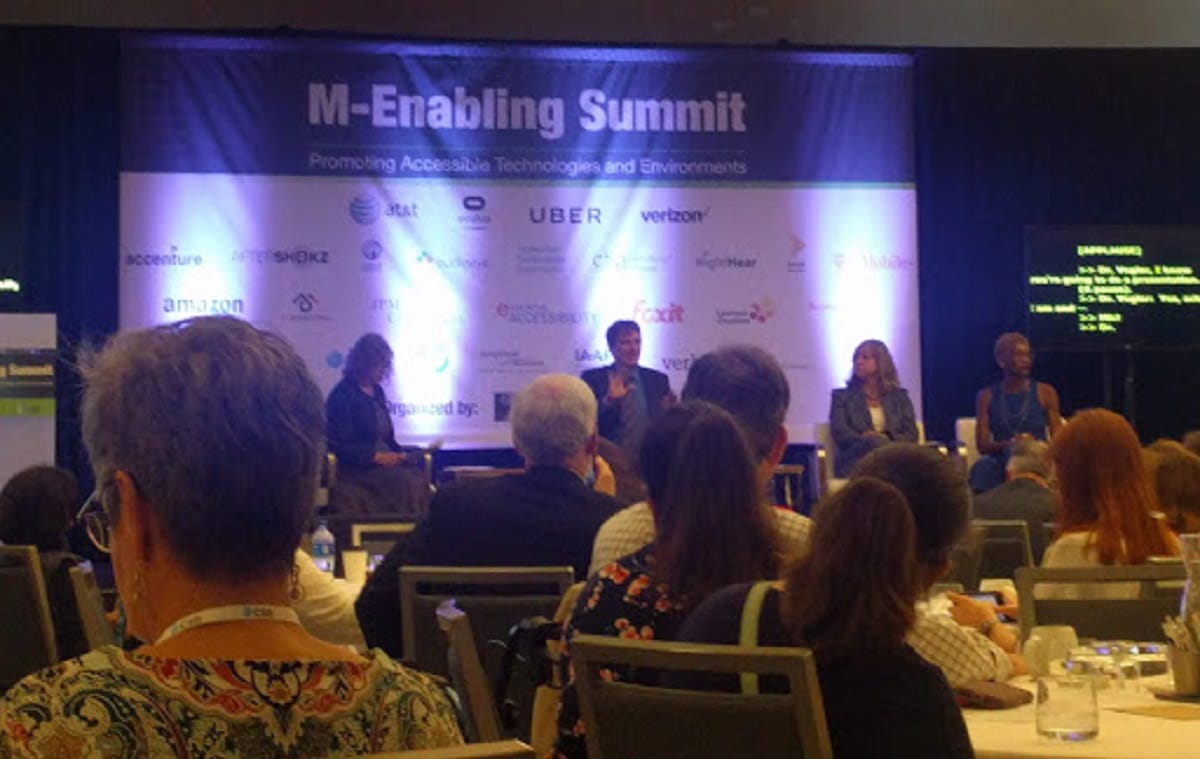Digital Accessibility Improving, but People with Disabilities Still Seek More Inclusive Access
ARLINGTON, Virginia – June 18, 2019 – Comprehensive legislation addressing accessibility is necessary to ensure that information technology is available to a wider group of people, particularly to people with disabilities, said panelists speaking at the M-Enabling Summit here on Tuesday. Innovations

ARLINGTON, Virginia – June 18, 2019 – Comprehensive legislation addressing accessibility is necessary to ensure that information technology is available to a wider group of people, particularly to people with disabilities, said panelists speaking at the M-Enabling Summit here on Tuesday.
Innovations involving wireless 5G technologies, for example, use multiple bandwidths including mid-band and low-band, which are more available in rural areas. But some of 5G’s functions will be more available than others, as the gaps in rural coverage present a “real problem” for which a “massive funding effort will be necessary,” said Paul Schroeder, vice president of public policy at Aira. The company offers wearable smart glasses and an integrated mobile app helping people with limited visibility.
Aside from the issue of reaching out to rural users, Schroeder said that a problem for companies like AIRA is the goal to create a “people-centered internet.” Various kinds of disability services need a high bandwidth, low latency connection, and there “has to be assurance that the data moves through.”
The challenge about providing digital accessibility to disabled persons is how to standardize the measurement of accuracy. Christian Vogler, director of the Technology Access Program at Gallaudet University, said that the “99 percent accuracy” that many tech companies boast of is virtually impossible.
“Each user should receive info that is palatable for them, so it’s honestly very difficult to have a standard in terms of how to best [use closed captions],” said Vogler.
The Federal Communications Commission uses four main aspects of caption quality, according to Suzy Rosen Singleton, chief of the FCC Disability Rights Office. Those aspects consist of accuracy of the words, proper placement on screens, synchronicity with audio and completeness.
Despite these guidelines, the FCC does not have “sufficient records to be able to incorporate specific metrics,” said Singleton.
So how can company regulations for digital accessibility be improved? There was an attempt to regulate websites through rules put in place with the Americans with Disabilities Act and Section 508 of the Rehabilitation Act during the George W. Bush administration, said Dan Goldstein, founding partner at Goldstein & Levy.
However, Section 508, which ensures equal access to goods, services and communications, only applies to federal government agencies and services.
“The problem with having standard in the statute is not why websites don’t maintain accessibility,” Goldstein sad. “You have to change the infrastructure and culture, and if you don’t, dynamic website aren’t going to stay accessible for more than a second.”
Goldstein also introduced the idea of a Safe Harbor Remediation Plan. A company would get a safe harbor, or a provision that its conduct will be deemed not to violate a given rule, if it publicly filed a website remediation plan that requires hiring a web accessibility coordinator, a web accessibility policy distributed to employees of the site and Web Accessibility training for all employees or contractors developing the website.
This plan, if filed and implemented, according to Goldstein, would “solve the problem” of lacking digital accessibility.
Another focus of improving company standards of accessibility would be to make sure that any proposed accessibility legislation would “make sure standards of access are adaptable from one country to another,” said Andrew Kirkpatrick, head of accessibility at Adobe.
Accessibility is also a key factor for the digital inclusion model of smart cities. “The smart cities environment could make the digital divide worse, if we don’t think about the types of technology we implement,” said Megan Lawrence, accessibility technical evangelist at Microsoft. Digital inclusion is the key to a city’s success and its long-term sustainability.
“We are not necessarily trying to reach only providers but everyone, that’s why I think some kind of federal guidance has to be provided,” added Karen Peltz Strauss, a consultant.
(Photo by Masha Abarinova.)










Member discussion